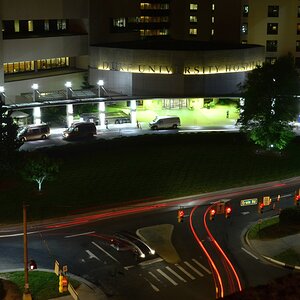Navigation
Install the app
How to install the app on iOS
Follow along with the video below to see how to install our site as a web app on your home screen.

Note: This feature currently requires accessing the site using the built-in Safari browser.
More options
You are using an out of date browser. It may not display this or other websites correctly.
You should upgrade or use an alternative browser.
You should upgrade or use an alternative browser.
Sigma - AF 70-200/2.8 EX DG II APO MACRO HSM IF TELEPHOTO ZOOM LENS FOR OLYMPUS
- Thread starter Nick09
- Start date
Don Kondra
Been spending a lot of time on here!
- Joined
- Dec 11, 2007
- Messages
- 1,637
- Reaction score
- 904
- Location
- Saskatoon, Saskatchewan, Canada
- Website
- donkondra.weebly.com
- Can others edit my Photos
- Photos NOT OK to edit
I imagine it boils down to "quantity" of sales 
My first thought was to BS you about it being a better lens but...
Cheers, Don
My first thought was to BS you about it being a better lens but...
Cheers, Don
Munky
TPF Noob!
- Joined
- Apr 25, 2009
- Messages
- 356
- Reaction score
- 0
- Location
- Minneapolis, MN
- Website
- www.rikogonzalez.com
- Can others edit my Photos
- Photos OK to edit
It's because they are Four Thirds Mounts

To capture images, D-SLR cameras incorporate a device called an image sensor (CCD, MOS, etc.) that captures light in the form of electrical signals. However, since the image sensor’s characteristics differ from those of film, a lens optimized for film photography may perform poorly with an image sensor.
Developed explicitly to fulfill the potential of digital technology, the Four Thirds system is a new, open standard created with an eye to the future of D-SLR cameras. Since its introduction in 2002, this trend-setting standard has received worldwide recognition for its superior performance and enhanced compatibility.
The core design concept of the Four Thirds system is to facilitate optimization of the size, performance, and extendibility of digital cameras and lenses. In addition, a standardized lens mount allows photographers to freely combine interchangeable lenses and cameras from different manufacturers. This is the key feature of the Four Thirds system, the one that makes it possible to explore the full potential of digital photography.
Unlike older SLR systems, Four Thirds has been designed from the ground up to be entirely digital. Many lenses are extensively computerized, to the point that Olympus offers firmware updates for many of them. Lens design has been tailored to the requirements of digital sensors, most notably through telecentric designs. The size of the sensor is slightly smaller than for most DSLRs and this implies that lenses, especially telephoto lenses, can be smaller. For example, a Four Thirds lens with a 300 mm focal length would cover about the same angle of view as a 600 mm focal length lens for the 35 mm film standard, and is correspondingly more compact. That is, the Four Thirds System is said to have a crop factor (focal length multiplier) of about 2.

To capture images, D-SLR cameras incorporate a device called an image sensor (CCD, MOS, etc.) that captures light in the form of electrical signals. However, since the image sensor’s characteristics differ from those of film, a lens optimized for film photography may perform poorly with an image sensor.
Developed explicitly to fulfill the potential of digital technology, the Four Thirds system is a new, open standard created with an eye to the future of D-SLR cameras. Since its introduction in 2002, this trend-setting standard has received worldwide recognition for its superior performance and enhanced compatibility.
The core design concept of the Four Thirds system is to facilitate optimization of the size, performance, and extendibility of digital cameras and lenses. In addition, a standardized lens mount allows photographers to freely combine interchangeable lenses and cameras from different manufacturers. This is the key feature of the Four Thirds system, the one that makes it possible to explore the full potential of digital photography.
Unlike older SLR systems, Four Thirds has been designed from the ground up to be entirely digital. Many lenses are extensively computerized, to the point that Olympus offers firmware updates for many of them. Lens design has been tailored to the requirements of digital sensors, most notably through telecentric designs. The size of the sensor is slightly smaller than for most DSLRs and this implies that lenses, especially telephoto lenses, can be smaller. For example, a Four Thirds lens with a 300 mm focal length would cover about the same angle of view as a 600 mm focal length lens for the 35 mm film standard, and is correspondingly more compact. That is, the Four Thirds System is said to have a crop factor (focal length multiplier) of about 2.
Similar threads
- Replies
- 11
- Views
- 1K
- Replies
- 0
- Views
- 1K
- Replies
- 1
- Views
- 1K

![[No title]](/data/xfmg/thumbnail/37/37125-c083e505c2e7d8f15f717a96de782959.jpg?1619737883)



![[No title]](/data/xfmg/thumbnail/37/37126-93feffeca0e9e6ad893962c03a7a341e.jpg?1619737884)




![[No title]](/data/xfmg/thumbnail/38/38742-02271ebbfd9d0efdddfac04f9fde5694.jpg?1619738704)

